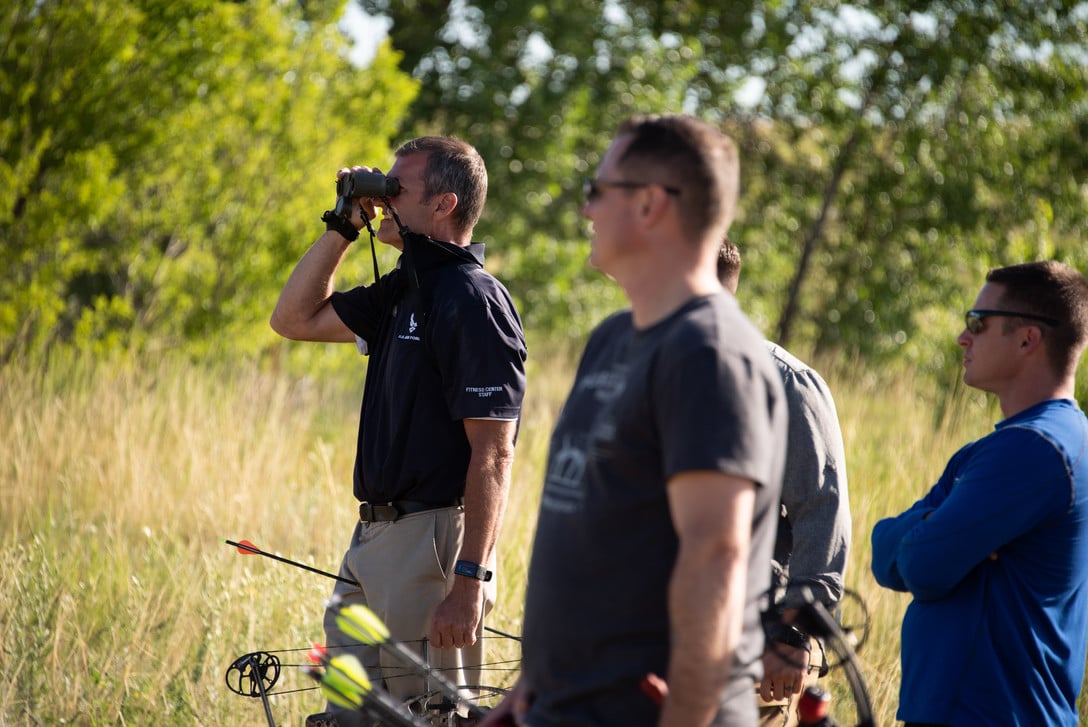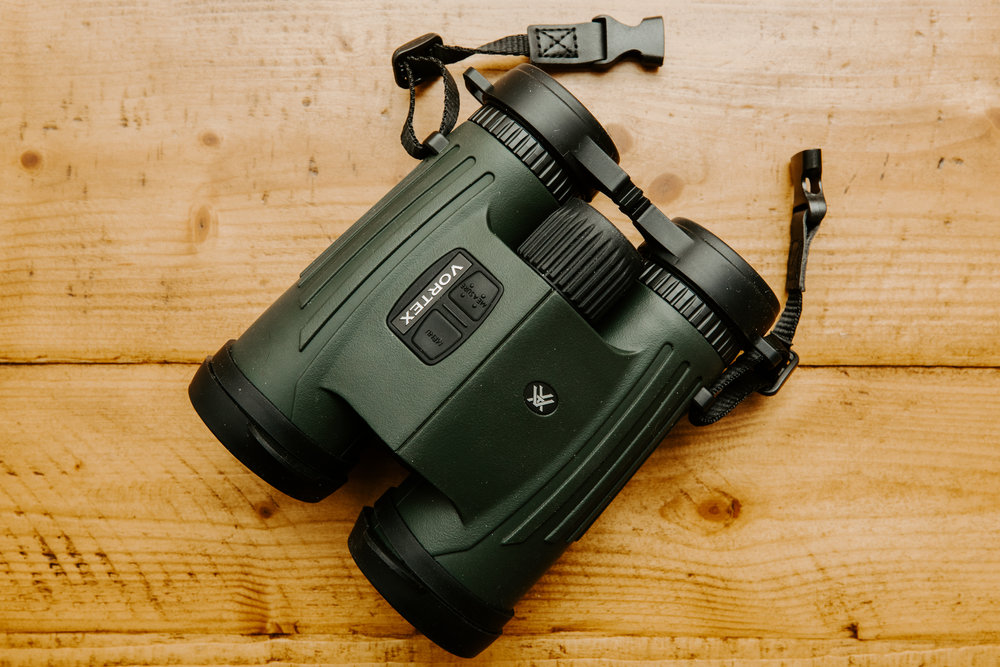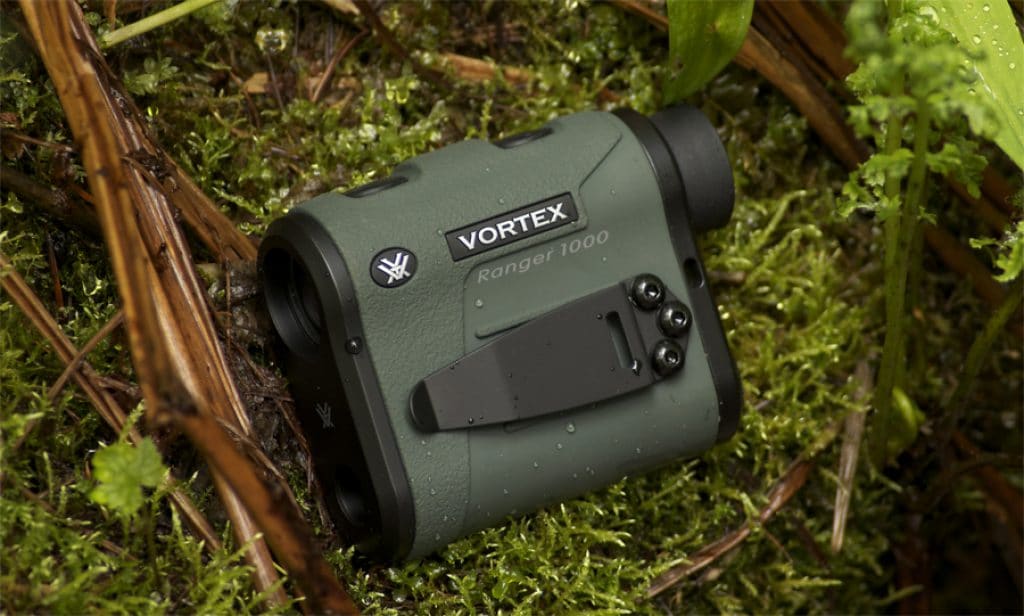
Whether you’re just into 3D archery, or bow hunting as well, a rangefinder is an invaluable asset to any archer. We touched on rangefinders a bit before in the article that I wrote on the best binoculars for 3D archery, but now I’ll cover all of your options for the best rangefinders specifically for 3D archery.
We’ll cover the best rangefinders for tournament use, both with and without angle compensation. We’ll even check out some budget rangefinders, and we’ll look at the best rangefinders under $300. So if you’re ready to up your game, let’s get started:
What is Angle Compensation (also called “Bow Mode”)?
Some rangefinders have an angle compensation mode built in, it’s also commonly referred to as “bow mode”. This mode uses both the rangefinders’ optics and hardware together with an algorithm to automatically adjust for the angle of the shot. First we’ll cover how angle compensation works, if it’s really worth it – then we’ll check out a few of the best archery rangefinders with angle compensation.
When you’re adjusting for the angle of a shot manually, like when you’re gap shooting, you have to account for a few different factors that will affect the shot. The distance and angle of the shot, as well as the drop off of the arrow due to gravity are the most important of these factors.
This is especially true when you’re shooting at an incline or a decline. The more that the distance of the shot and / or the angle of the shot is increased, the more difficult it becomes to manually adjust your aim for those factors. In these situations, a rangefinder is something that you’re going to definitely want to have in your archery bag.
After having tested out several different rangefinders from different companies, I can say that they’re very useful when shooting uphill, downhill, from tree stands and for steep shots. My opinion is that angle compensated rangefinders are mostly accurate for shooting, but they’re not perfect. The more money you’re willing to spend, the more accurate the rangefinder will be is generally the rule of thumb.
Angle compensation is useful, and important for both 3D archery and bow hunting. While there are those people out there who don’t think angle compensation is worth the extra money, I feel that it’s a great tool to have in your bag of tricks, and it’s especially useful for newer to intermediate level archers. Also, angle compensation is important for shooting from tree stands and elevation, so hunter’s will definitely use it.
Besides, these days there are plenty of more affordable rangefinders that also feature an angle compensation mode at no additional cost – and we’ll look at them in a few minutes.
First, let’s take a look at the best overall rangefinders for 3D archery…
The Best Archery Rangefinders with Angle Compensation
Vortex Optics Fury HD 5000 Roof Prism Laser Rangefinder Binoculars

The absolute top of the line rangefinder for any application, the Optics Fury HD 5000 by Vortex is my number 1 choice for best rangefinder for 3D archery. With superior angle compensation, this rangefinder has several sighting and target modes available for any type of shot you may have to make.
It has fully multi-coated HD lenses and gives you a clear picture both night and day, no matter how high or low the light levels are. This unit is nitrogen purged and offers both water and fog proof operation. The Optics Fury HD 5000 has a durable rubber armored housing, is shockproof and made to take on all weather conditions. It can also easily be set up and used on a car or tripod mount. You can’t go wrong with this one.
Nikon Monarch 3000 Stabilized Black

Another great choice, especially for the price is the Nikon Monarch 3000. With a distance range from eight to three thousand yards, it’s a pretty versatile unit. It’s a high visibility rangefinder, with 5 select-able brightness levels, and is image stabilized so that you can get a clear, steady picture even when holding it one handed, on the fly.
The unit’s both fog proof and waterproof and features an eight second sustained measurement for sighting both single and multiple targets. This is a pretty solid rangefinder for any 3D archery tournament.
Vortex Optics Ranger Laser Rangefinders

With a ton of 5 star ratings, the Optics Ranger line by Vortex is a great choice for any archer. Vortex is known for being one the leaders in rangefinders and military optics. There are two models, the 1300 and 1800, respectively. Both are great choices, but with not much of a difference in price, I would definitely go with the 1800 for it’s extra features.
The 1300 is capable of ranging accurately up to 1300 yards, while the 1800 will range… you guessed it… up to 1800 yards. Both models are easy to use and have a simple to use interface and user menu. There’s cool scan feature that gives you continuous readings when you scan along a landscape, allowing you to automatically scan either a moving target – or multiple targets.
It has 3 brightness modes to give you a clear picture in all light conditions, multi-coated lenses and durable textured rubber armor grip coating. Waterproof and fog proof, the unit includes a neck lanyard and utility clip. A solid rangefinder that gives you good value for your money.
The Best Rangefinders Under $300
Many archers are looking to pick up a great rangefinder with a limited budget to spend. Believe it or not, there are some nice budget rangefinders with angle compensation on the market these days. It’s important when shopping for a budget rangefinder that you avoid any of those cheap knock-offs that are sold on some web sites online.
While it’s generally true that you get what you pay for, this is especially true when it comes to rangefinders. Finding a good rangefinder for under $300 can be a bit difficult, especially if you also want a rangefinder that has angle compensation technology.
When it comes to rangefinders, the nature of the technology is such that quality rangefinders can simply not be duplicated by overseas companies that produce dirt cheap, imported knock-offs.
Luckily for you, I’ve found a few good budget rangefinders that have angle compensation…
Bushnell Scout DX 1000 ARC 6 x 21mm Laser Rangefinder

First up is the Bushnell Scout DX 1000, a quality rangefinder for the price. It features a built in inclinometer which works with both it’s ‘Bow Mode’ and ‘Rifle Mode’ and is accurate to within half a yard at various distances.
With 6X magnification, it offers a range from five to five thousand yards. It has 3 sight in modes: Brush, Bullseye and Scan Mode. The unit is compatible with most magnetic attachment systems, it’s waterproof and comes with a battery, carrying case and neck strap.
Nikon 16224 Arrow ID 3000 Bowhunting Laser Rangefinder

Made especially for bow hunters, the Nikon 16224 Arrow ID 3000 is a solid rangefinder under $300 that’s also great for 3D archery. It features Nikon’s Tru-Target priority system, which allows you to choose from different ranging modes, ideal for hunting situations when you’re shooting from behind brush or grass.
It’s water resistant and rainproof, and has a tough yet ergonomic design with a comfortable fit to your eye. This is a cool rangefinder for the price, especially for those of you who are interested in bow hunting as well as 3D archery.
Simmons 801600 Volt 600 Laser Rangefinder

Definitely a budget rangefinder, this unit is only recommended for those of you who really need a halfway decent rangefinder for around $100. If you can wait and save up a bit for one of the above rangefinders, I would recommend that you do so.
That being said, if you need an entry level rangefinder that has some angle compensation capability, this may be for you. It’s a good rangefinder for the usual bow hunting distances, but not for hunting, golf or other long range uses. It’s made to only range for distances up to 200 yards.
The optics seem to give a clear picture when you’re using it in an open field, but it’s not great at ranging through brush or tall grass. It doesn’t have a backlight, so it’s not as clear to read ranges at dusk or dawn. However for the ranges it covers, it did seem accurate, but if you need something for low light conditions or ranges over 200 yards you should consider either the Nikon or Bushnell models listed above.